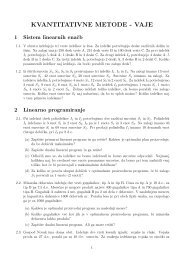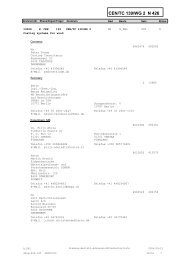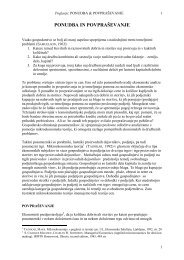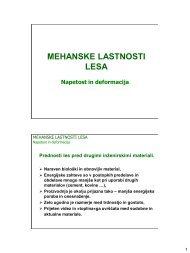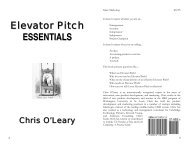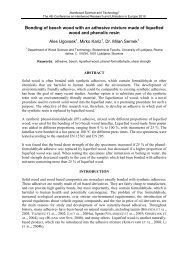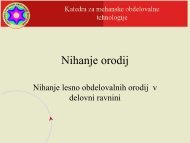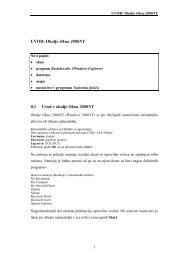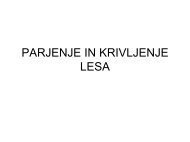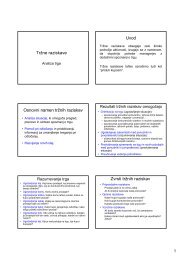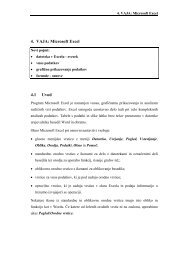Influence of carboxylic acids on fixation of copper in wood ...
Influence of carboxylic acids on fixation of copper in wood ...
Influence of carboxylic acids on fixation of copper in wood ...
- No tags were found...
You also want an ePaper? Increase the reach of your titles
YUMPU automatically turns print PDFs into web optimized ePapers that Google loves.
686are available <strong>in</strong> the market. This <strong>in</strong>cludes <strong>copper</strong>-quat, <strong>copper</strong> dimethyl-dithiocarbamateand <strong>copper</strong> azole. Copper–am<strong>in</strong>e relati<strong>on</strong>ship significantly <strong>in</strong>fluencesthe performance <str<strong>on</strong>g>of</str<strong>on</strong>g> the preserved <strong>wood</strong>. In the previous researches, it wasfigured out that <strong>copper</strong>–am<strong>in</strong>e molar ratio significantly affects the penetrati<strong>on</strong>,fixati<strong>on</strong> and performance <str<strong>on</strong>g>of</str<strong>on</strong>g> the preservative (Zhang and Kamdem 2000).However, leach<strong>in</strong>g <str<strong>on</strong>g>of</str<strong>on</strong>g> <strong>copper</strong> from <strong>copper</strong>/am<strong>in</strong>e preserved <strong>wood</strong> is stillhigher compared to <strong>wood</strong> impregnated with <strong>copper</strong>/chromium formulati<strong>on</strong>. Inearlier papers it was reported that the presence <str<strong>on</strong>g>of</str<strong>on</strong>g> octanoic acid significantlydecreases the leach<strong>in</strong>g <str<strong>on</strong>g>of</str<strong>on</strong>g> <strong>copper</strong> from preserved <strong>wood</strong> (Humar et al. 2003). Inorder to elucidate the leach<strong>in</strong>g <str<strong>on</strong>g>of</str<strong>on</strong>g> <strong>copper</strong> from <strong>wood</strong> preserved with differentcomb<strong>in</strong>ati<strong>on</strong>s <str<strong>on</strong>g>of</str<strong>on</strong>g> <strong>copper</strong>, am<strong>in</strong>es and <str<strong>on</strong>g>carboxylic</str<strong>on</strong>g> <str<strong>on</strong>g>acids</str<strong>on</strong>g>, the present research wascarried out.Materials and methodsTreatment soluti<strong>on</strong>sTo determ<strong>in</strong>e the <strong>in</strong>fluence <str<strong>on</strong>g>of</str<strong>on</strong>g> <str<strong>on</strong>g>carboxylic</str<strong>on</strong>g> <str<strong>on</strong>g>acids</str<strong>on</strong>g> <strong>on</strong> leach<strong>in</strong>g <str<strong>on</strong>g>of</str<strong>on</strong>g> <strong>copper</strong> fromimpregnated <strong>wood</strong>, 90 different aqueous soluti<strong>on</strong>s were prepared. Am<strong>on</strong>g these,30 formulati<strong>on</strong>s that exhibited good solubility and did not have precipitateswere chosen (Table 1). Preservative soluti<strong>on</strong>s that were <strong>in</strong>vestigated c<strong>on</strong>sisted <str<strong>on</strong>g>of</str<strong>on</strong>g><strong>copper</strong>(II) sulphate, am<strong>in</strong>e, <str<strong>on</strong>g>carboxylic</str<strong>on</strong>g> acid and boric acid. C<strong>on</strong>centrati<strong>on</strong> <str<strong>on</strong>g>of</str<strong>on</strong>g> Cu<strong>in</strong> the soluti<strong>on</strong> was 1% <strong>in</strong> all the <strong>in</strong>vestigated soluti<strong>on</strong>s. Three different am<strong>in</strong>es(ethanolam<strong>in</strong>e, diethanolam<strong>in</strong>e, triethanolam<strong>in</strong>e) and also three <str<strong>on</strong>g>carboxylic</str<strong>on</strong>g><str<strong>on</strong>g>acids</str<strong>on</strong>g> (octanoic, 2-ethylhexanoic, decanoic) were used for the preparati<strong>on</strong> <str<strong>on</strong>g>of</str<strong>on</strong>g> thesoluti<strong>on</strong>s as well (Table 1).Impregnati<strong>on</strong>Specimens (1.5·2.5·5.0 cm) made <str<strong>on</strong>g>of</str<strong>on</strong>g> Norway spruce (Picea abies) were vacuumimpregnated accord<strong>in</strong>g to the EN 113 procedure (ECS 1989) with differentpreservative soluti<strong>on</strong>s listed <strong>in</strong> Table 1. The treatment <str<strong>on</strong>g>of</str<strong>on</strong>g> the <strong>wood</strong> specimensresulted <strong>in</strong> a soluti<strong>on</strong> uptake <str<strong>on</strong>g>of</str<strong>on</strong>g> about 400 kg/m 3 . Later, the specimens werec<strong>on</strong>diti<strong>on</strong>ed for 4 weeks, the first 2 weeks <strong>in</strong> closed chambers, the third week <strong>in</strong>half closed and the fourth week <strong>in</strong> open <strong>on</strong>es. Prior to leach<strong>in</strong>g, specimens werestored at 25°C, 65% RH.Leach<strong>in</strong>g procedureLeach<strong>in</strong>g was performed accord<strong>in</strong>g to the modified EN 1250 (ECS 1994) procedure.The end gra<strong>in</strong>s <str<strong>on</strong>g>of</str<strong>on</strong>g> the samples were sealed with a two-comp<strong>on</strong>ent epoxycoat<strong>in</strong>g. Afterwards, n<strong>in</strong>e specimens, treated with the same soluti<strong>on</strong>, were put<strong>in</strong>to three vessels and positi<strong>on</strong>ed with a ballast<strong>in</strong>g device. Three hundred grams<str<strong>on</strong>g>of</str<strong>on</strong>g> distilled water was added and the vessel with its c<strong>on</strong>tent was shaken with thefrequency <str<strong>on</strong>g>of</str<strong>on</strong>g> 55 m<strong>in</strong> )1 . Water was replaced seven times daily. Afterwards,atomic absorpti<strong>on</strong> spectroscopy (AAS) analyses <str<strong>on</strong>g>of</str<strong>on</strong>g> the leachate were performedand percentages <str<strong>on</strong>g>of</str<strong>on</strong>g> leached <strong>copper</strong> were calculated. In order to compare themodified method with the standard <strong>on</strong>e, specimens impregnated with Cu(II)sulphate were used as reference.



